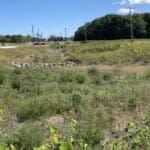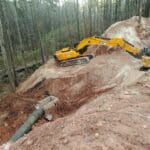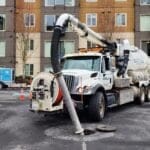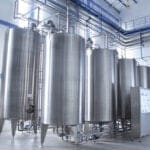State of Alaska
Alaska Stormwater Laws & Regulations
The State of Alaska operates under the Alaska Pollutant Discharge Elimination System (APDES) program under the authorization of the U.S. Environmental Protection Agency (EPA) through state regulation Alaska Administrative Code (AAC) 18 AAC 83.615. The Alaska Department of Environmental Conservation (ADEC) manages the permitting and compliance of wastewater discharge, including stormwater. The DEC offers a phase II MS4 general permit for stormwater discharges for large and small construction activities.
Excerpt-Alaska Administrative Code
Title 18 Environmental Conservation Chapter 83 Alaska Pollutant Discharge Elimination System Program
18 AAC 83.620. Requirements for concentrated aquatic animal production facilities
(a) A concentrated aquatic animal production facility is a point source subject to the APDES permit program.
(b) The department may designate any warm or cold water aquatic animal production facility as a concentrated aquatic animal production facility upon determining that it is a significant contributor of pollution to waters of the United States. In making this designation, the department shall consider the following factors:
(1) the location and quality of the receiving waters of the United States;
(2) the holding, feeding, and production capacities of the facility;
(3) the quantity and nature of the pollutants reaching waters of the United States;
(4) other relevant factors.
(c) A concentrated aquatic animal production facility designated under (b) of this section is not required to submit a permit application until the department has conducted an on-site inspection of the facility and has determined that the facility should and could be regulated under the permit program.
Excerpt- Alaska Storm Water Guide, December 2011
The NPDES storm water permit requirements are based largely on a pollution-prevention approach. The most effective storm water management techniques emphasize preventing rain and snowmelt from coming into contact with pollutants, and preventing discharges directly to nearby receiving waters. APDES storm water permits require operators of permitted activities or systems to use best management practices (BMPs) designed to effectively protect water quality for their particular site conditions and activity.
The NPDES storm water permit program specifically regulates three types of storm water discharges: storm water from certain municipal separate storm sewer systems (MS4s), discharges of storm water associated with industrial activity, and storm water from construction sites disturbing one or more acres.
Excerpt- Storm Water Treatment Plan Review Guidance Manual, September 2010
2.3 State Regulations 2.3.1 Alaska Pollutant Discharge Elimination System (APDES)
Within the APDES permit program, there are three permits that apply to the regulation of storm water discharges and associated pollutants. These three permits include the following: 1. Construction General Permit (CGP) – applies to the control of storm water discharges and associated pollutants on construction projects with one acre or more of land disturbance. The existing CGP was transferred from EPA to ADEC on October 31, 2009. ADEC reissued the permit on December 31, 2009, with changes in the NOI and NOT submittal processes and standard permit conditions. ADEC has developed an eNOI system to similar to EPA’s. Contractors will operate under this APDES CGP until ADEC reissues the permit in the Spring of 2011. 2. Municipal Separate Storm Sewer System (MS4) Permit – applies to municipal separate storm sewer systems. The existing MS4 permits were transferred from EPA to ADEC on October 31, 2009. 3. Multi-Sector General Permit (MSGP) – applies to post-construction storm water discharges and potential pollutants at industrial facilities. The existing MSGP was transferred from EPA to ADEC on October 31, 2009. Facilities will operate under the EPA-issued MSGP until ADEC reissues the permit, estimated to be the fall of 2013.
Fairbanks Urbanized Area
Within the Fairbanks Urbanized Area, The Alaska Department of Environmental Conservation (ADEC) operates under state regulation Alaska Administrative Code (AAC) 18 AAC 83.615 and APDES Permit no. AKS-053406. ADEC has jurisdiction over both private and public projects outside of the urbanized areas of the Fairbanks city limits, the North Pole city limits, and the Borough road service areas, as well as publicly funded projects within the urbanized area of the North Pole city limits. The MS4 permit requires ADEC to administer and enforce compliance with stormwater discharge permits in an effort to decrease stormwater pollutants and increase overall water quality.
ADEC submittal requirements for privately funded projects encompassing 1 or more acre of land includes the original Alaska Notice of Intent (NOI). ADEC submittal requirements for publicly funded projects encompassing 1 or more acre of land include the original NOI, a Storm Water Pollution Prevention Plan (SWPPP), and a Permanent Storm Water Control Plan (PSWCP). Note: All publicly funded land under ADEC jurisdiction, regardless of size, are required to submit a PSWCP.
Supplemental Documents:
APDES Stormwater Website
APDES Electronic Notice of Intent
APDES Storm Water Forms
Alaska Storm Water Guide
Fairbanks Urbanized Area Storm Water Management Agency Review & Project Submittal Requirements
 Kenosha, Wis. Highway KR Regenerative Stormwater ConveyanceThe Root-Pike Watershed Initiative Network Kenosha County, and others worked with AQUALIS to design and implement an innovative solution for stormwater control along Highway KR.
Kenosha, Wis. Highway KR Regenerative Stormwater ConveyanceThe Root-Pike Watershed Initiative Network Kenosha County, and others worked with AQUALIS to design and implement an innovative solution for stormwater control along Highway KR. Durham, N.C. Sinkhole Leads to Stormwater System RehabilitationThe tenant on this property noticed a depression that opened to the ground below and notified the property owners.
Durham, N.C. Sinkhole Leads to Stormwater System RehabilitationThe tenant on this property noticed a depression that opened to the ground below and notified the property owners.
